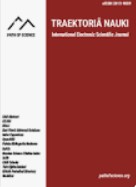Relationship between Compressive, Flexural and Split Tensile Strengths of Waste Copper Wire Fiber Reinforced Concrete
Relationship between Compressive, Flexural and Split Tensile Strengths of Waste Copper Wire Fiber Reinforced Concrete
Author(s): Aliyu Abubakar, Abbangana Mohammed, Samson Duna, Umar Saeed YusufSubject(s): Evaluation research
Published by: Altezoro, s. r. o. & Dialog
Keywords: compressive strength; flexural strength; fiber reinforced concrete; split tensile strength; waste copper wire;
Summary/Abstract: Concrete has low tensile strength, narrow ductile range and low crack resistance. Micro cracks in the concrete propagate quickly under loading, leading to brittle behaviour of the concrete. These cracks expose steel reinforcement to agents of corrosion. Adding steel fibres reduces the damage, but over a long period, the steel fibres corrode. This study used waste copper wire as fibre reinforcement in concrete to investigate the relationship between compressive, flexural and split tensile strengths. Grade 25 concrete was produced and cured for 7, 14 and 28 days before testing. One millimetre in diameter copper wire was used in the study. The fibre volume used was 0.5, 1.0 and 1.5%, respectively. The samples were tested for compressive, flexural and split tensile strengths. The results indicated a general increase in compressive, flexural and split tensile strengths of the concrete with an increase in waste copper wire fibre contents. Maximum compressive strength of 34.58 N/mm2 was obtained at 1.5% fibre content and 28 days of curing. Flexural strength increases from 4.36 N/mm2 at 0% fibre content and seven days curing to 6.68 N/mm2 at 1.5% fibre content and 28 days curing. The split tensile strength increased fibre content from 2.72 N/mm2 at seven days to 4.39 N/mm2 at 28 days of curing. Mathematical models were produced for the relationships between compressive, flexural and split tensile strengths. The models have R2 values greater than 70%, and the higher the value of R2, the better the model fits the data. This indicates that the model’s predictors influenced the variations in the responses.
Journal: Traektoriâ Nauki
- Issue Year: 8/2022
- Issue No: 05
- Page Range: 4001-4009
- Page Count: 9
- Language: English

